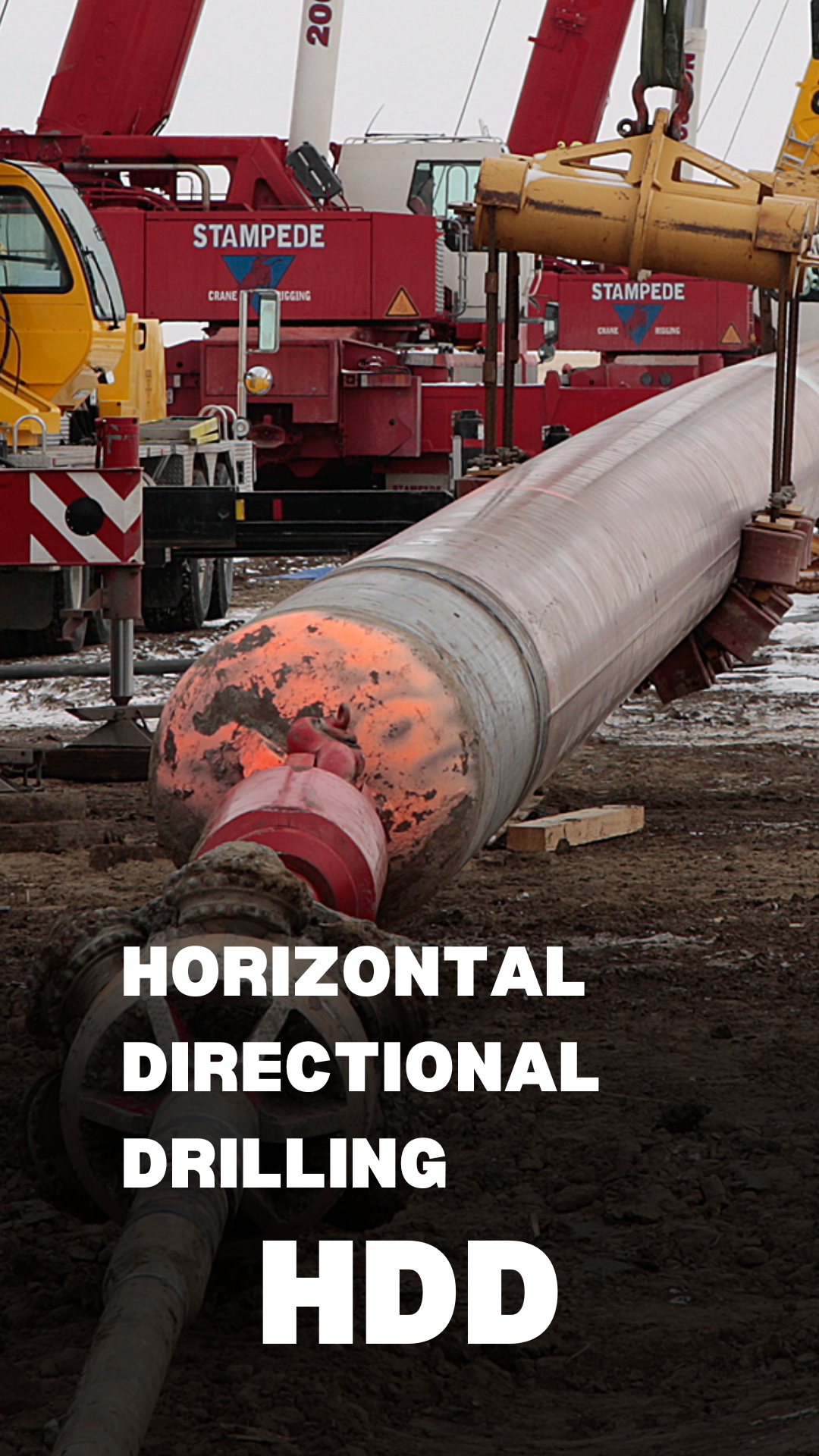The Dirt Desk - Q&A
What is Horizontal Directional Drilling in the Pipeline Industry?
In the world of pipeline installation, traditional trenching methods can sometimes be impractical, costly, or environmentally disruptive. That’s where Horizontal Directional Drilling (HDD) comes in—a modern technique that allows pipelines to be installed underground with minimal surface disruption. But what exactly is HDD, and why has it become such a game-changer in the pipeline industry? Let’s break it down.
Understanding Horizontal Directional Drilling
Horizontal Directional Drilling is a trenchless method used to install underground pipelines, conduits, and cables. Unlike conventional excavation, HDD involves drilling a horizontal or near-horizontal path beneath the surface, allowing pipelines to cross obstacles like rivers, roads, wetlands, and urban infrastructure without disturbing them.
The process generally consists of three stages:
- Pilot Hole Drilling
The process starts with a small-diameter pilot hole, guided along a carefully planned underground path. Using a drill head equipped with sensors, operators can steer the drill accurately, maintaining the required depth and alignment. - Hole Reaming
Once the pilot hole reaches the target endpoint, it is gradually widened using reamers to accommodate the pipeline or conduit. This step may require multiple passes to achieve the desired diameter. - Pullback
Finally, the pipeline is attached to a pulling head and pulled back through the reamed hole, placing it securely underground. Lubrication, often in the form of drilling fluid (bentonite slurry), is used to reduce friction and prevent damage to the pipe.
Why HDD is Valuable in Pipeline Construction
Horizontal Directional Drilling offers several advantages over traditional open-cut methods:
- Minimal Environmental Impact: HDD reduces the need for trenching, preserving ecosystems, waterways, and existing landscapes.
- Cost-Effective in Certain Terrains: Avoiding extensive excavation can save both time and money, especially when crossing obstacles like rivers or highways.
- Reduced Surface Disruption: Since the surface remains largely untouched, there’s less disturbance to traffic, businesses, and communities.
- Versatility: HDD can accommodate a wide range of pipe sizes and materials, making it suitable for oil, gas, water, and telecommunications pipelines.
Challenges and Considerations
While HDD is highly effective, it’s not without challenges:
- Geological Limitations: Extremely rocky soils or hard bedrock can complicate drilling.
- Drill Fluid Management: Proper handling of bentonite slurry is essential to prevent environmental contamination.
- High Initial Investment: The equipment and skilled operators required can be expensive compared to simpler trenching methods, though savings often offset these costs in complex projects.
Applications in the Pipeline Industry
HDD has become standard in many pipeline projects, especially where traditional trenching is impractical. Common applications include:
- River or Stream Crossings: Installing pipelines beneath waterways without disturbing aquatic habitats.
- Urban Areas: Avoiding disruption to roads, buildings, and utilities.
- Environmentally Sensitive Zones: Preserving wetlands, forests, and protected lands.
Horizontal Directional Drilling has transformed the pipeline industry by providing a trenchless, environmentally conscious, and cost-effective method for installing underground pipelines. Its precision, versatility, and minimal surface impact make it an indispensable tool for modern infrastructure projects. As technology continues to improve, HDD is likely to play an even greater role in connecting energy, water, and communication networks across the globe.

